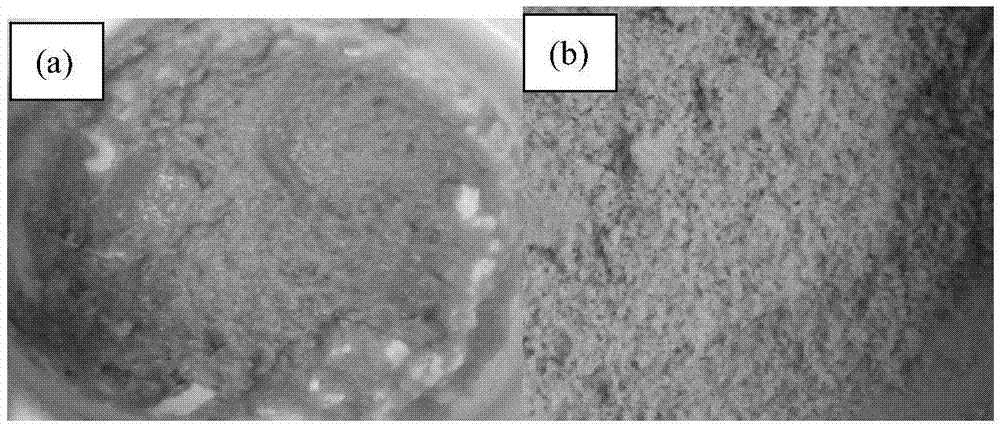Antibiotic zymocyte dreg curing dehydrating method
A technology of antibiotics and fermentation bacteria, which is applied in the field of antibiotic fermentation residue treatment and waste resource utilization, which can solve the problems of high cost in the treatment process, large production volume, difficult storage and transportation, etc., and achieve the solution of difficult storage and transportation, stable biochemical properties , the effect of changing physical properties
- Summary
- Abstract
- Description
- Claims
- Application Information
AI Technical Summary
Problems solved by technology
Method used
Image
Examples
Embodiment 1
[0037] Mix the erythromycin fermentation residue with the No. 1 solidification dehydrating agent (the main component is sodium carbonate) at a mass ratio of 1:0.2, and carry out a solidification reaction at 0°C under stirring conditions to obtain a dry solid mixture of the residue.
[0038] Morphology of erythromycin fermentation slag before and after solidification and dehydration figure 1 It can be seen from the figure that after the solidification reaction of the bacteria residue, the physical appearance has changed from a colloidal state (a) to a dry solid powder (b).
Embodiment 2
[0040] Mix penicillin fermented bacteria residue with No. 2 solidified dehydrating agent (mainly composed of magnesium sulfate) at a mass ratio of 1:3, and carry out solidification reaction at 100°C under stirring conditions to obtain a dry solid mixture of bacteria residue.
[0041] The morphology of the penicillin fermentation slag before and after solidification and dehydration figure 2 It can be seen from the figure that after the solidification reaction of the bacteria residue, the physical appearance has changed from a colloidal state (a) to a dry solid powder (b).
Embodiment 3
[0043] Mix griseofulvin fermentation residue with No. 3 solidification dehydrating agent (the main component is copper sulfate) at a mass ratio of 1:1, and perform a solidification reaction at 15°C under stirring conditions to obtain a dry solid mixture of residue.
[0044] Morphology of griseofulvin fermentation slag before and after solidification and dehydration image 3 It can be seen from the figure that after the solidification reaction of the bacteria residue, the physical appearance has changed from a colloidal state (a) to a dry solid powder (b).
PUM
 Login to View More
Login to View More Abstract
Description
Claims
Application Information
 Login to View More
Login to View More - R&D
- Intellectual Property
- Life Sciences
- Materials
- Tech Scout
- Unparalleled Data Quality
- Higher Quality Content
- 60% Fewer Hallucinations
Browse by: Latest US Patents, China's latest patents, Technical Efficacy Thesaurus, Application Domain, Technology Topic, Popular Technical Reports.
© 2025 PatSnap. All rights reserved.Legal|Privacy policy|Modern Slavery Act Transparency Statement|Sitemap|About US| Contact US: help@patsnap.com



